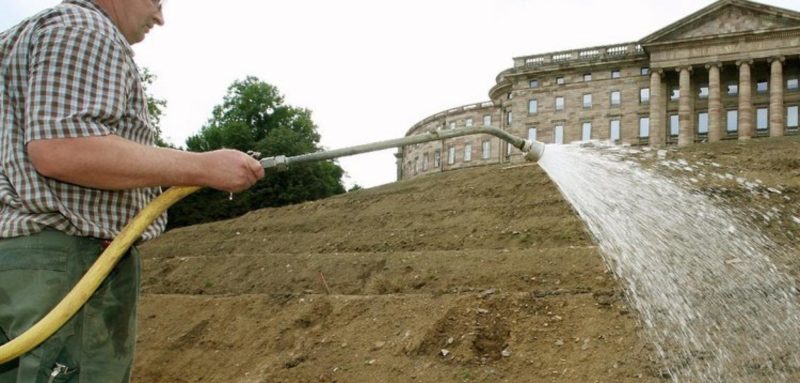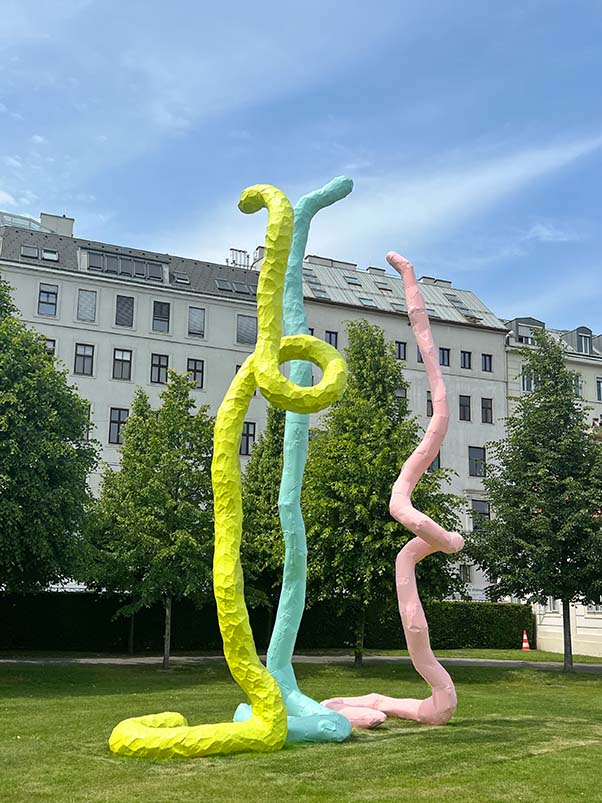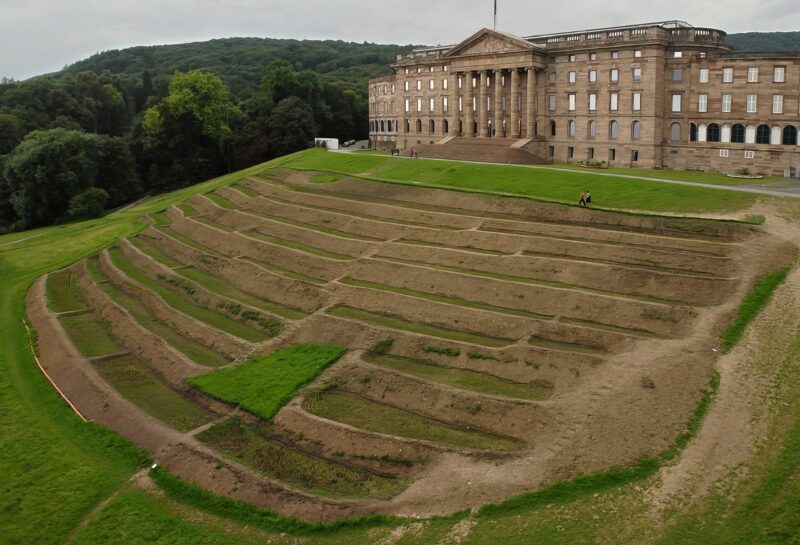
Permanently closed
This temporary installation transformed approximately 7,000 square meters in front of Schloss Wilhelmshöhe, Kassel, into terraced rice fields during documenta 12 in 2007. The installation has since been removed.
Introduction
In 2007, Thai artist Sakarin Krue-On 1 attempted to transform the park in front of a castle in Kassel 2, Germany 3, into a 7.000sqm terraced rice field. For this project, Krue-On and his Thai 4 team tried to dispense the use of machines as much as possible while relying on traditional methods, using simple devices such as spades, forks and hooks.
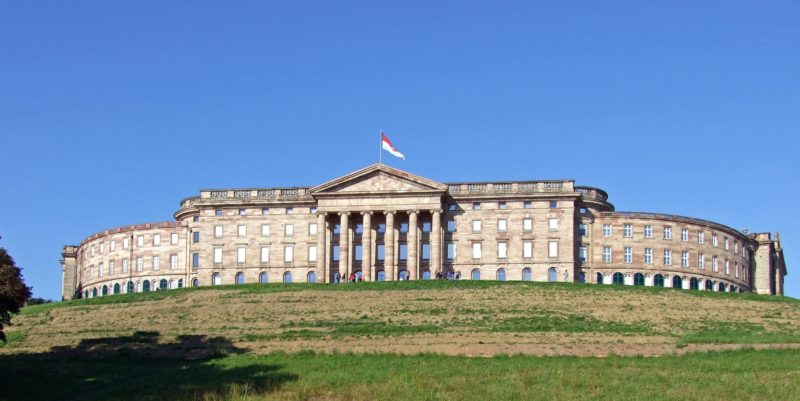
The international team that took part in both creating the terraces and cultivating the rice fields was made up of a professional rice farmer as well as locals from the Kassel regions and employees of documenta. A local gardening company used mini excavators to construct the terraces.

Work started in May of 2007, just a few weeks before opening to the public while filling the fields with water 5 and planting rice began only a few days before the documenta started.
Because of earth movements‚ the other slopes were brown and bare during the opening of the documenta. The team took the water necessary for cultivating wet rice from a lake at the foot. An engine-driven pump moved it to the top basic, from where it was distributed downwards using PVC pipes.
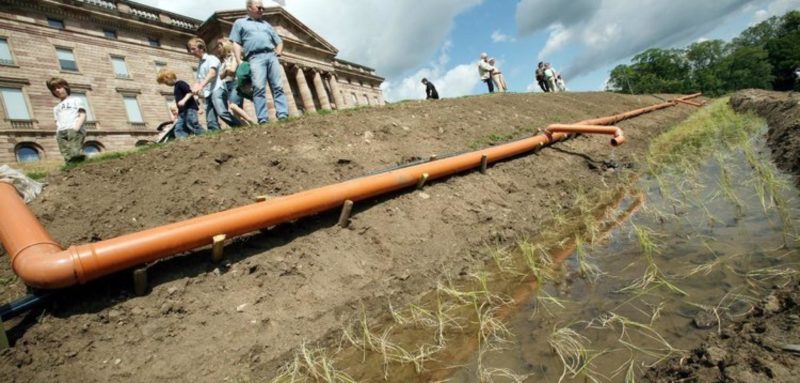
Clash of cultures – Key element of this work
The clash of cultures, impressively shown through the contrast between Wilhelmshöhe Castle 6 and the field, is a key element of this work: On the one hand, the majestic piece of European architecture, symbolizing status and power, embodying Western provenance.
Right beneath, Thai workers use ancient methods to cultivate rice fields. Working in the rice field represents vastly different values, such as collaboration, growth and development. With this work, Sakarin poses questions: What is the relationship between the farmers and the location? Are there equal partners in this project?
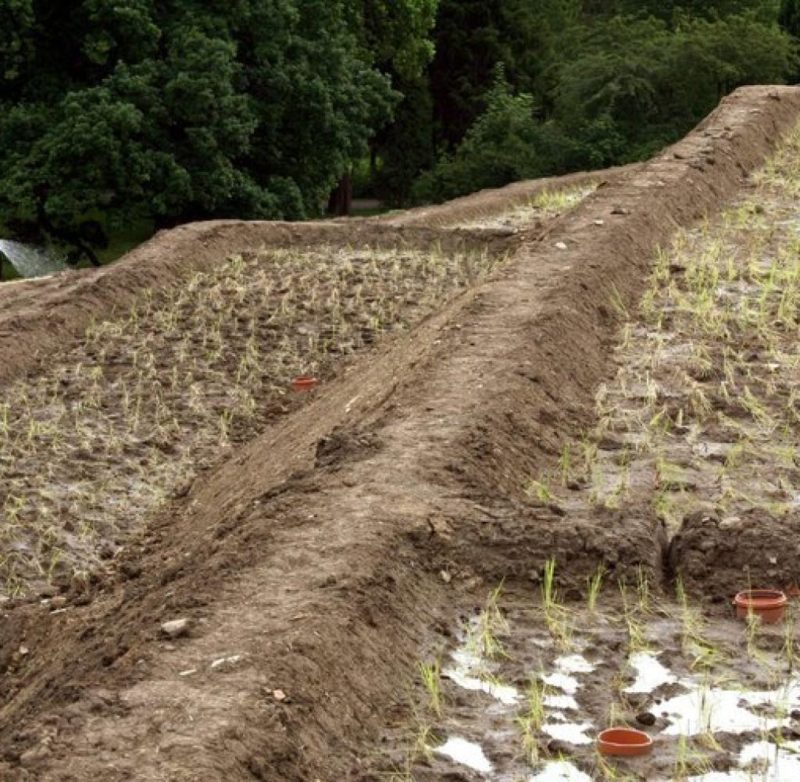
Terraced Rice Field can also be seen as a representation of growth and collaboration. Pulling off documenta 12’s 7 biggest work, an art event that drew 754,000 paying visitors, required an immense amount of negotiation and communication, in which different working methods met in the planning process.
Another major component of the artwork is collective 8 cooperation in which traditional knowledge meets scientific expertise.
There is also a historical component to the artwork. Only a few hundred meters from the Bergpark Wilhelmshöhe are the remains of the “Chinese village” Mou-lang. Built in 1781 by Landgrave Friedrich II, it was a series of artistic buildings that referenced Chinese building style but also had agricultural objectives.
The slope is traditionally used by locals for recreational purposes, especially for sledding in winter and offers incredible views of the castle right behind it as well as the city.
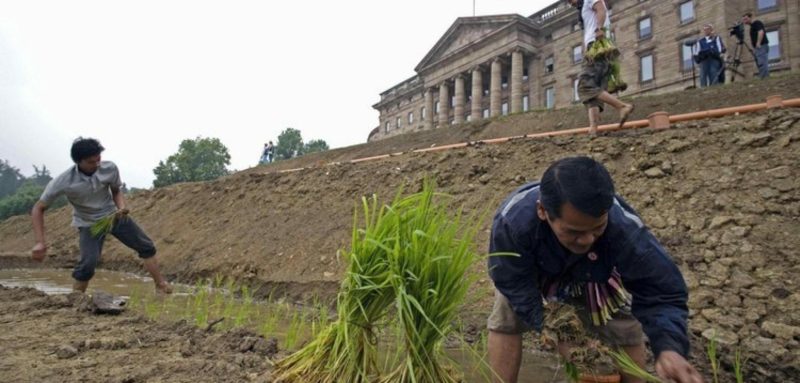
Conclusion
This site-specific 10 project was the first time that wet rice open-air terraces were cultivated in outside fields in Germany. Unfortunately, most terraces couldn’t hold the water. Regardless of what amount got added, it kept trickling away, only to emerge beneath the slope, almost building a new spring.

Four days after the opening, on June 20th, the work on the project ultimately got stopped due to security concerns. Mechanical irrigation was halted because the mountain could have slid. In the process, visitors couldn’t see water surfaces anymore.
However, more importantly than successfully growing crops, Krue-On managed to bring together people from all walks of life, transcending barriers by working next to each other.
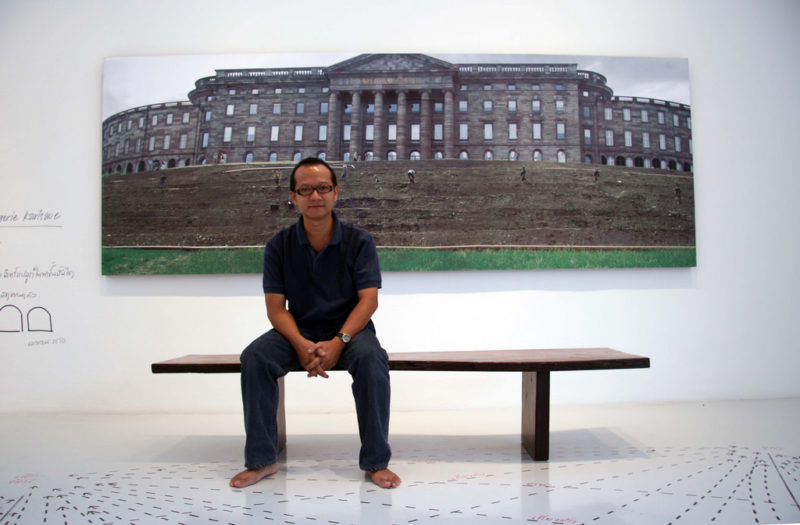
Explore nearby
Schloss Wilhelmshoehe, Kassel, Germany
 Marta Minujín's Parthenon of BooksInstallation ended (dismantled in 2017)6 km away
Marta Minujín's Parthenon of BooksInstallation ended (dismantled in 2017)6 km away Joseph Beuys' 7000 Oaks6 km away
Joseph Beuys' 7000 Oaks6 km away Apichatpong Weerasethakul's ghost sculptureInstallation ended (dismantled in 2012)6 km away
Apichatpong Weerasethakul's ghost sculptureInstallation ended (dismantled in 2012)6 km away Ayşe Erkmen footbridge installationInstallation ended (dismantled in 2017)141 km away
Ayşe Erkmen footbridge installationInstallation ended (dismantled in 2017)141 km away Franz West's sculptures144 km away
Franz West's sculptures144 km away
